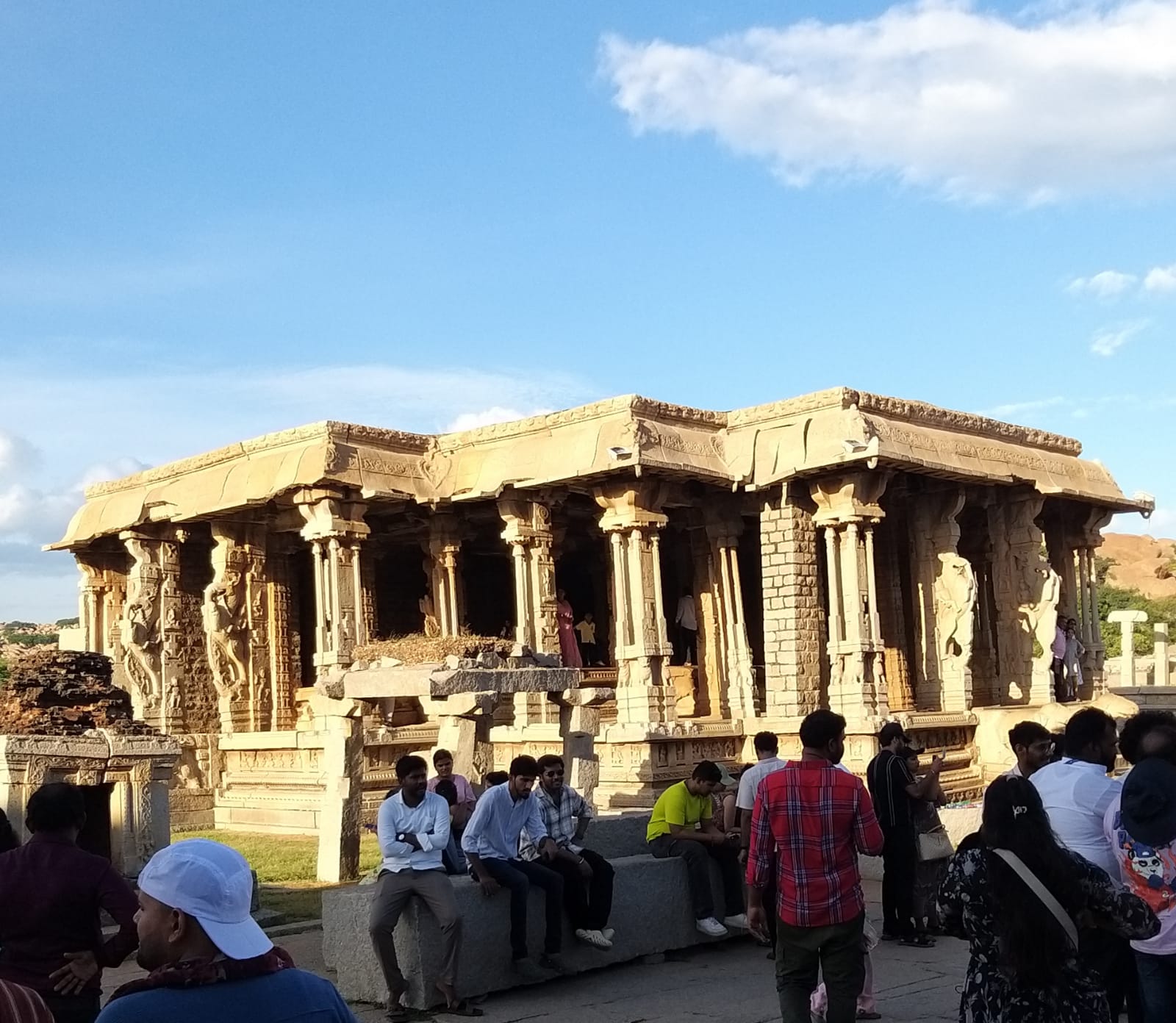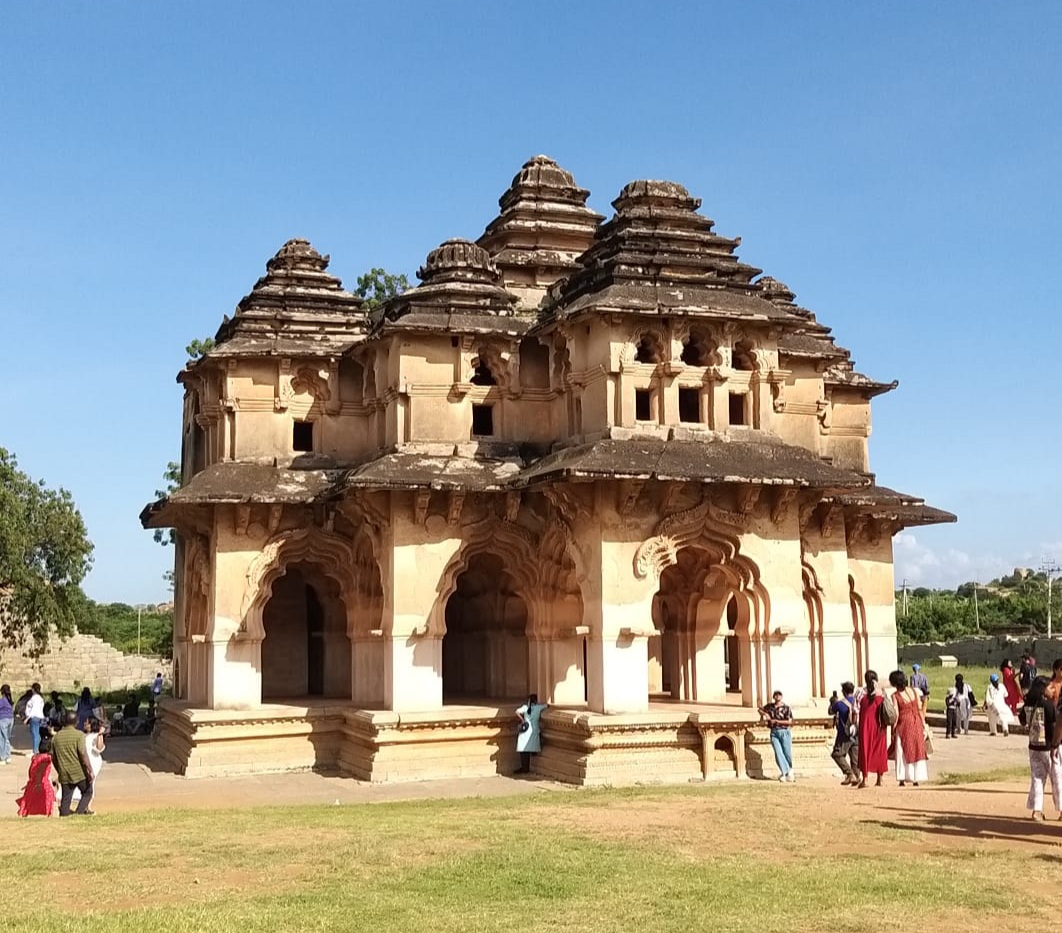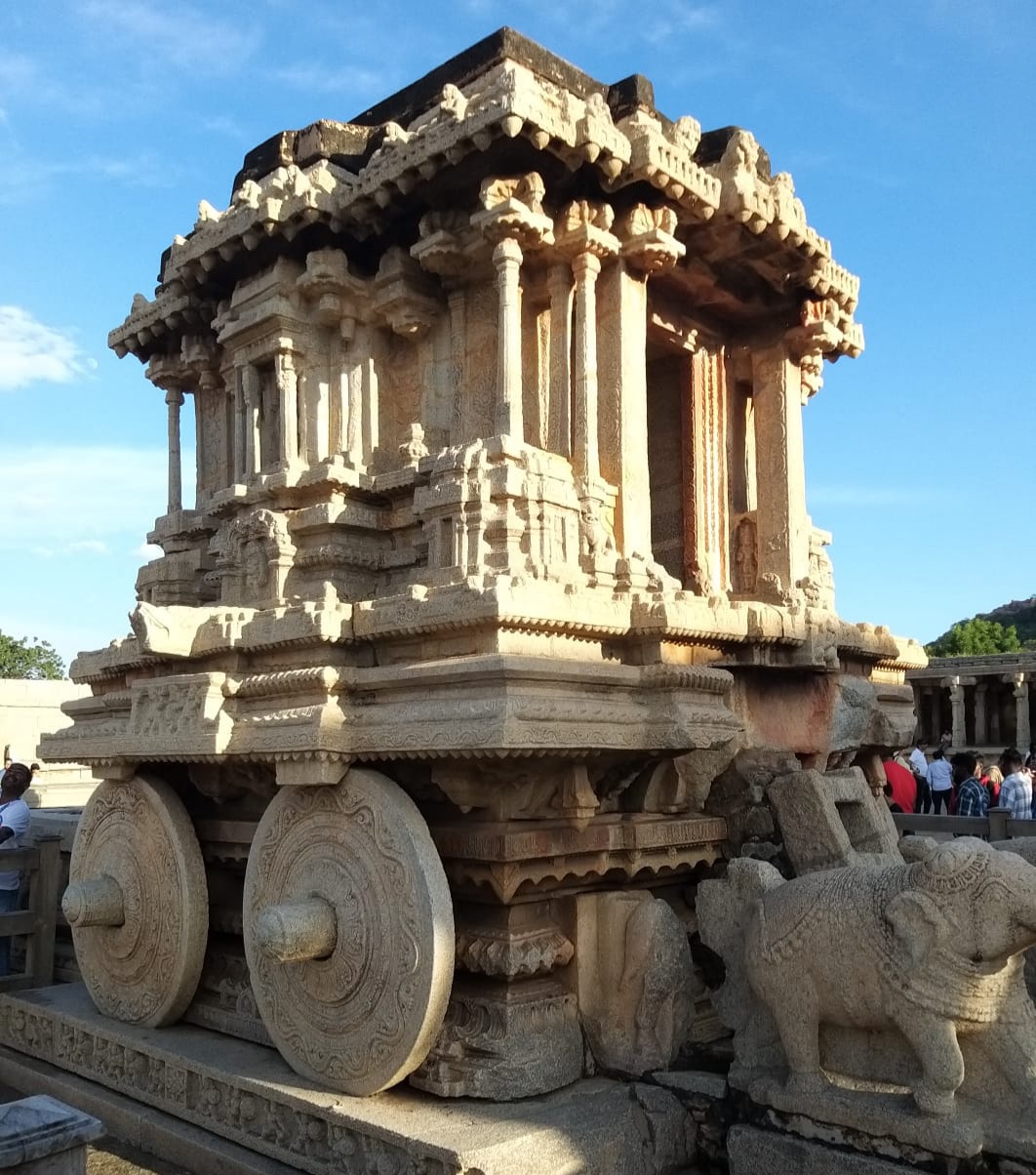Posted on 14 October 2025:
Hampi—Echoes of a Lost Empire in Stone and Spirit
In the heart of Karnataka, where the Tungabhadra River flows through rugged hills and open plains, lies Hampi—a timeless canvas of stone, spirit and splendor.
Once the proud capital of the Vijayanagara Empire, Hampi now whispers stories through its 1600+ monuments: majestic temples, shrines, forts, mandapas, pillared halls, sacred tanks and royal complexes—this sacred landscape tells stories of a golden age.
Spread across 4,187 hectares, this UNESCO World Heritage Site is a living museum of Dravidian architecture, where granite chariots and towering gopurams rise in harmony with nature.
The Vitthala Temple, with its musical pillars and ceremonial pavilions, stands as the crown jewel of this heritage. The Krishna, Narasimha, Ganesa, Hemakuta, Achyutaraya, Pattabhirama, Vitthala temple and many more complexes stand as silent sentinels of the Vijayanagara Empire’s brilliance.
The Virupaksha temple, still alive with worship, continues to evolve, while the Vitthala temple dazzles with its ornate beauty—housing a granite chariot, musical pillars and ceremonial mandapas within its cloistered embrace.
From the banks of the Krishna River to the edge of the Indian Ocean, the Vijayanagara Empire once bloomed like a golden lotus—ruled by mighty kings and crowned by the city of Hampi.
In 1565, the Battle of Talikota shattered Hampi’s glory—King Aliya Rama Raya was slain, and the city burned for six months.
Though it lingered for a century, its brilliance faded. Beneath its ruins lie echoes of older dynasties—Buddhism, Chalukyas, Rashtrakutas, Hoysalas and Yadavas—each leaving quiet footprints in stone.
Here, every stone breathes history and every pathway leads to wonder.
Hampi remains a spiritual beacon and architectural marvel—drawing seekers, storytellers and dreamers to its sacred soil.





